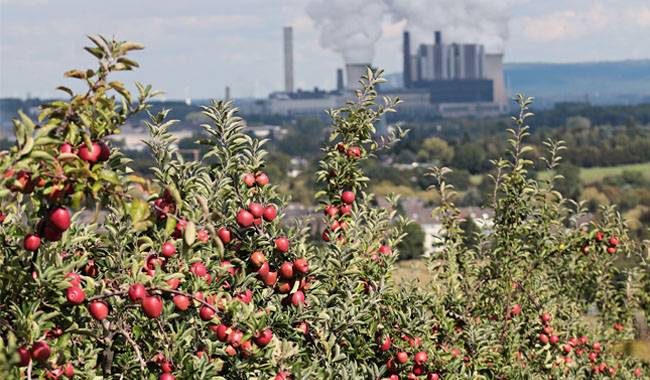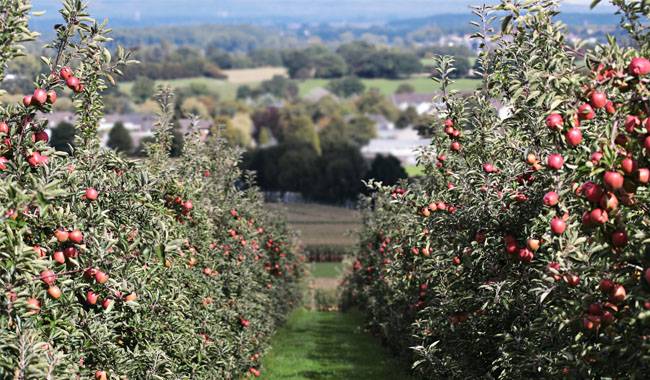
The reality is not like that. Seeing swarms of aphids on currants, and then on the young branches of pears, plums, and apples, the gardener rushes to the store to buy the most effective poison to destroy aphids – so that these creatures on the plant are not!
Stop it, what about the “useful berries and fruits”? Aphids are just the beginning. If the weather is wet, the fungus will be ready and by the time the fruit is ripe, all kinds of fan stingrays will pounce.
We need more treatment than more and more. However, it is easy to buy fruits and berries in stores or markets with theoretically safe doses of pesticides. For about seasonal prices of pesticides, fertilizers, and will pull.
This article will be for those who want to be a part of nature, not the king of nature. We have been czars in the past and many of us have worn the “crown” enough. Therefore, I will talk about alternative opportunities for seasonal conservation Gardens – early spring actions.
ON THE EXTREMES OF CHEMICAL TREATMENTS AND ECOLOGICAL METHODS
The transition to organic and biodynamic farming has clearly taken the products of our garden gardens to a new level.
Vegetables and fruits are first no longer harmful and after some time, when the fauna in the plot is stabilized, they start to become already useful.
Do not exclude the presence of pests and diseases on the site, that is, you will find and nibble leaves, and fungi, and aphids and beetles, moths, and butterflies are there, and even worm apples.
Don’t panic – they all need something to eat too before they get eaten by birds or useful critters. The main thing is to keep the pests from crossing some sort of harmful threshold, i.e. we can’t be left without a major harvest group.
Usually, in a balanced ecosystem, beneficial organisms are quite successful in regulating the population of pests.
In addition, in the absence of pests and diseases, our pets accumulate significantly fewer substances, including vitamins.
Since the share of useful things for lions accumulates in response to stress, fungal, and pest attacks – plants protect themselves and the accumulation of phenolic compounds, vitamins, antioxidants trying to protect from future misfortune children – this is that fruit.
But this does not mean that one should take a stand to reject chemical treatment until the last apple. Extremes are not good in any case, and gardening is no exception.
If the environment is particularly conducive to the reproduction of pests, and the “freeloaders” are determined to devour the entire crop, you can and should use chemicals. Not the most eradicating, but the safest.
There are cases where no amount of poison can save the harvest (locust or gypsy moth invasion) and it must just survive, not fill the entire field with pesticides.
PEST AND DISEASE PREVENTION IN THE GARDEN
In late winter, it is good to whiten the trunks of fruit trees. For the controversy of this procedure, I note that the bark of trees whitened with lime with copper sulfate and ash is significantly healthier. And the lichen is dead with this mixture, there is no need to strip off anything and traumatize the tree.
The lichens themselves are absolutely harmless, but they are left on the branches creating a comfortable environment for pests and fungi. So whitewash the trunk and backbone branches.
We usually do not add anything sticky to the whitewash, because the main task of such whitewash is – to protect the bark from the bright early spring sun and the significant diurnal temperature difference, to eliminate lichens, and to thin out the fungi settled on the trunk and branches.
By June, most of the white powder has been washed away by the rain and normal bark function is not impeded.
After the soil thaws, it is advisable to spread ash on the root zone, about 2-3 cups per square meter: this will poison the life of many harmful insects that overwinter in the soil and will delay their escape to the surface.
At the end of winter, hot water is traditionally used to water the currant bushes. Aphids usually leave their eggs at the bud end to overwinter and the hot water stimulates them to awaken. And here it is a frost and the aphids are not ready.
By the way, you can do the same with cranberry bushes if they are small – cranberry leaf beetles also overwinter on the shoots.
To consolidate the results and prevent fungal diseases, it is worth sprinkling the currant bushes with ash. And strawberry planting ashes can be used for pest control and fertilization.

THE AWAKENING OF THE GARDEN – WHO AND WHERE?
The warm sun of spring heralds the awakening of everything. And if the buds on the trees wake up and begin to grow on those reserves that have been accumulated since last summer, the critters wake up very hungry and must begin to reinforce immediately.
A large number of insects overwinter in the garbage and topsoil. When average daily temperatures reach 42-50°F (6-10°C), the pests begin to move out and move along the trunks of the trees toward the canopy. This is where they have to get warm!
A very good, long-term working option is scratch tape. It is best to organize such a barrier before the buds bloom so that the earliest spitters are caught there.
Very good is a “skirt” with adhesive applied on the inside. You can apply fly tape or double-sided tape along the inside edge.
The velcro will need to be replaced if it gets dirty, otherwise, the whole “skirt” will need to be renewed. A good option is a waistband made of a fluffy synthetic material (if you have an old jacket).
Insects don’t climb up tree trunks all at once, even the most ingenious ones. Meanwhile, predatory spiders are hungry and will crawl up from their holes. Such a bountiful meal will be definite happiness for them.
In gardens not poisoned by insecticides, predatory spiders are in such abundance that they wake up in the spring before other useful predators.
Spray the canopy with liquid smoke diluted 1:10 in water up to the “green cone” stage. The smell of smoke is a red flag for all creatures, forcing them into hiding.
Insects left in the canopy (e.g., cracks in the bark over winter) are sure to fall to the ground and try to hide in the bedding or soil surface. Then there are spiders. Maybe that’s when the beetles on the ground wake up-they’re hungry, too. The way back to the trees is blocked by trap strips.
When bushes are sprinkled with liquid smoke, the chances of insects being eaten by predators are very high. By feeding volunteer helpers in your garden in the spring, you can hope to successfully control pests throughout the season.
HOW DO I CONTROL FUNGAL DISEASES?
Traditionally, fungal diseases are prevented with copper sulfate or a Bordeaux mixture that also contains copper sulfate. Spraying the garden with these preparations in the fall and spring has become a necessity.
The preparations are quite toxic to a large number of microorganisms and are both harmful and beneficial. That said, the ecology of the site is already somewhat skewed and requires regular control of pathogens, which, by the way, tend to adapt.
Under established natural conditions, each harmful fungus has its own enemies to consume it, or poison it, or otherwise inhibit its spread. But in a cultivated garden, this is a problem.
If you don’t do anything to interfere, after a while (though long enough), everything will work itself out. But you need crops now!
So it makes sense to pay attention to biological agents and start restoring the microbial balance in your garden. There are many bio fungicides on sale now, and treatment with them can and should be used interchangeably to populate the site with a variety of useful microorganisms.
In addition, many of them can be used as fertilizers, plant growth stimulants, and help with plant immunity.
Bio fungicides can vary. Some contain live cultures of microorganisms and are stored and used under strict conditions.
Another part contains bacteria and fungi that have a negative impact on pathogens – they have a high shelf life, but understandably, they cannot multiply, settle, and be incorporated into the garden’s biological system. Compound preparations also have biocidal properties.
The microorganisms themselves, having a certain initial amount, are also cultivated quite successfully at home. Therefore, having bought them once, they can be grown and used throughout the summer. Then, you see, they themselves will also solve it on the spot.
Useful microorganisms (as well as harmful ones) grow and multiply most successfully in warm and humid conditions, i.e. soil treatment in spring before the buds on the tree open will give useful microorganisms the opportunity to establish and multiply.
Spraying trees in warm, humid weather before buds swell will help microorganisms to colonize the branches.
DEAR READERS
Not reading the instructions – in the case of struggling for the health of the garden – is particularly harmful and can lead to all sorts of unfortunate results. Therefore, it is better to be well prepared theoretically before the start of the season.
Assess the needs, estimate a set of preparations, study the instructions, ask questions in the forum. It is better when the garden is a friend and healer, not a battlefield.







